#Dan Armstrong bass guitar
Text
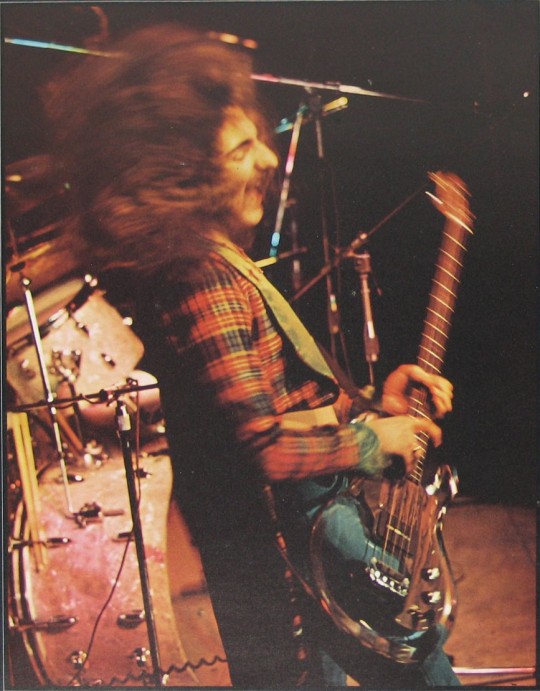

"THE ONLY REASONABLE BASS THEY HAD WAS THE DAN ARMSTRONG."
PIC INFO: Spotlight on live shots of Terence "Geezer" Butler of the mighty BLACK SABBATH, playing a Dan Armstrong Plexiglass Acrylic bass guitar while performing live at Birmingham Town Hall, Birmingham, UK, c. 1972, during the band's "Vol. 4" era.
GUITAR WORLD: "On "Black Sabbath Vol. 4" [1972], you’re pictured playing a Dan Armstrong plexiglass bass."
GEEZER: "I only used the plexiglass bass because we were on tour in America, somewhere between Detroit and Toronto, someone had opened the case of my Fender bass and smashed it to pieces. You could see the hammer marks.
It was a Sunday, and shops weren’t open, so we got in touch with the promoter, who had a friend who ran a music shop. He opened it up for us, but it was mostly cheap stuff . The only reasonable bass they had was the Dan Armstrong. That’s what I used on "Vol. 4," which probably has the worst bass sound of any Sabbath record.
On the next tour, that bass was stolen. That’s when I started having custom Jaydee and John Birch basses."
-- GUITAR WORLD, "Geezer Butler on BLACK SABBATH's early days, the making of 13 and which album has the worst bass sound," by Rob Blasko, published 8 January 2020
Sources: www.guitarworld.com/features/geezer-butler-on-black-sabbaths-early-days-the-making-of-13-and-which-album-has-the-worst-bass-sound & Vinyl Records.
#BLACK SABBATH#BLACK SABBATH 1972#Bass guitar#SABBATH#Geezer Butler#Lord Butler#Terence Geezer Butler#Dan Armstrong plexiglass bass guitar#Dan Armstrong bass guitar#Vol. 4#Dan Armstrong Plexiglass Acrylic bass#Hard rock#Heavy rock#Stoner rock#DOOM rock#70s rock#Heavy Metal#Rock photography#Photography#Bassist#Dan Armstrong plexiglass bass#Geezer#Bass#1972#70s#1970s#Bass player#Bass guitarist#Doom rock#Downer rock
6 notes
·
View notes
Photo

Denmark Street Soho 1971. Dan Armstrong made guitars used by many famous players in the 60′s and 70′s. The most famous was a plexiglass bass guitar used by Keith Richards.
52 notes
·
View notes
Photo
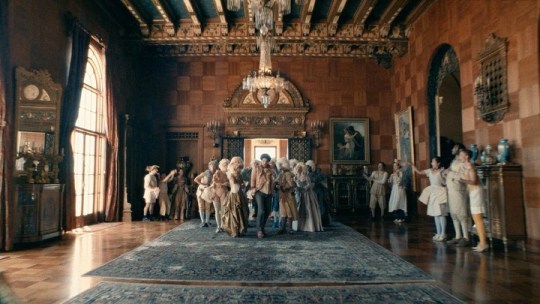
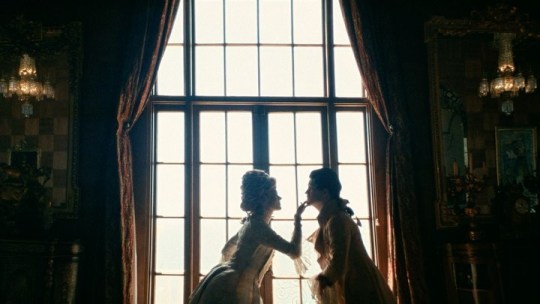
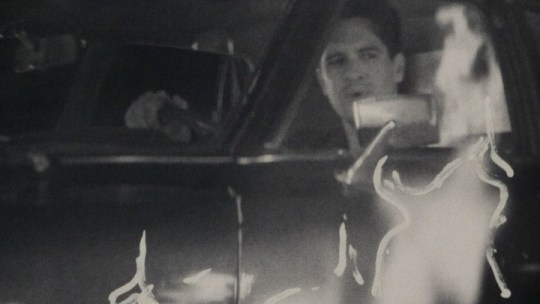
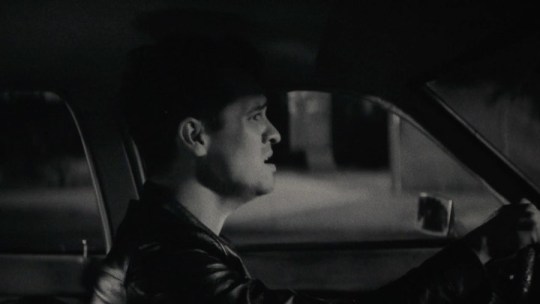

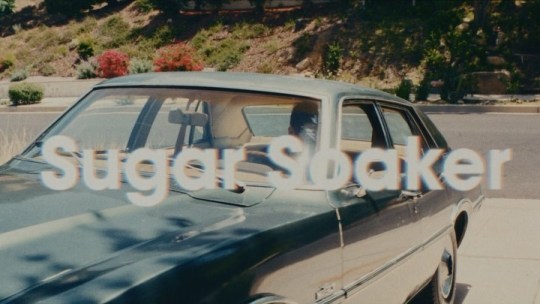
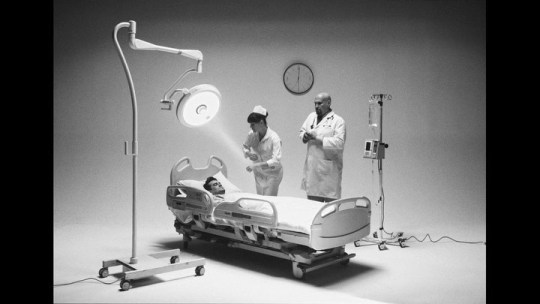
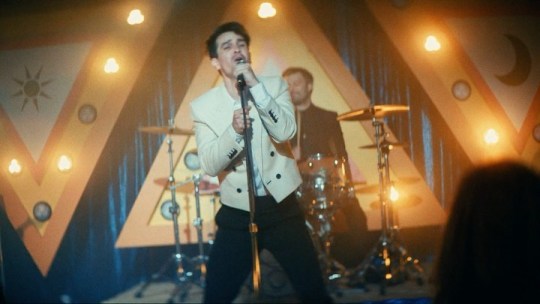

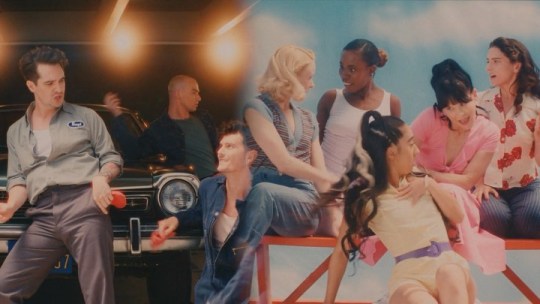
Emma Bürklin (@plush__baby):
Earlier this year we completed 6 videos for @panicatthedisco filmed over the course of 9(.5) days. This was a massive undertaking for our crew and cast and this entire team knocked it out of the park. I will never get over the intricacy and care of every aspect. Thank you to everyone who made these happen❗️
Directed by @breadandwalter
Executive Producer: @jesyodio
Producer: @plush__baby
Director of Photography: @ericbader
Production Designer: @sokocreations
Editors: Brendan Walter, Kevin Hindriks
Production Company: @teenager.ent
Color: Bryan Smaller, Kevin Hindriks
UPM: @doriansthomas
1st AD: @taylormade215
Script Supervisor: @andishezohoori
Choreographer: @monikafelicesmith
Costume Designer: @stylistbrooke
Key Hair & Makeup Artist: @makeuphair_mayra
Groomer: @aikafloreshair
Gaffer: @kylebartreid
Key Grip: Anthony Schrader, James O’Connor
Sound Mixer: @life_jedy
Location Manager: Pete Abrahams
VFX: Taylor Armstrong
Animators: Kevin Hindriks, Gon Borela, Glen Dones, DJ Belga, Paula Gohing
SHIFTai @fotokem_la
Stunt Coordinator: Travis Wong
Casting: @rebelcasting
AE: Jonathan Rosenblit
1st AC: Rich Hawkinson
2nd AC: Brian Freeman, Kyle Deven, Greg Hatton, Deepak Adhikary
DIT/Utility: Jacob Seldes
Ronin Op: Ben Fredman
Steadicam: Will Sampson, Quaid Cde Baca
B-Cam Op: Geoffrey Brent Shrewsbury
BBE: Justin Sadler, Jim Ed Willis, Sam Needham
1st SLT: Mike Winokur, Paul Kane
2nd SLT: Sam Needham
Best Grip/Driver: Richie Brush
Dolly Grip: James O’Connor
Grip: Nick Limina, Abel Soto, Rich Ferrat, Christian Andrew, Shane Greavette
Boom Operator: Ethan Rhanielle, Alex Gilroy
Art Directors: Devin Parker, Spencer Trent
Set Dresser: Mitch Dillon, Reno Bennedetti
Leadmen: Shay Turner, Zach Riddle
Pyro Tech: Anthony Delzio
Lifeguard: Tony Whitmore
Production Coordinators: Kalid Hussein, Nathan Vaughan
Office Production Coordinator: Ariel Hutchins-Fuhr
2nd AD: Alexandria Cardiel
2nd 2nd AD: Teck Holmes
AD PAs: Nafeisa Johnson, Anthony Sturdivant
Office PAs: Jubilee Daws, Jane Kim, Hollis Dohr
Truck PAs: Alex Reyes Méndez, Colin Hagiwara, Sean Lass, Jay Arias, Jordan Pelzl
Set PAs: Collin Wade, Kyle Ali, Jem Murillo, Corey Cunningham, Skylar Conner
Assistant Costume Designer: Anastasia Magoutas
On-Set Costumer: Maggie Kimball
Costume Assistant: Lucas Ciotti, Rachel Apatoff, Brooke Mulkins
Seamstress: Olga Podymova
Costume PA: Marissa Channing
SPFX Makeup Artists: Brittany Fontaine, Sam Tansey
HMU Assistants: Rob Sheppy, Sophie Guzman, Julie Dinh, Ashley Lee, Kandi Hernandez, Charde Thompson, Stacey Gonzalez, Nadine Robinson, Megan Gray, Carmen Martinez
Assistant Choreographer: Riley Roberts
Key Crafty Attendant: Sabino Salas Miranda, Raul Aguirre, Josh Gresham
COVID Officer: Stephen George, Caitlin Hiroto
Set Medic: Melissa Reed
Security: Crew Protection
Stunt Double: Nikita Teterev
Studio Teacher: Bettina Russo
Drivers: EJ Smith, Bill Colino, Josh Collins, Malik Riley
Starring:
@onlyleah as Maggie
Mike Naran on Guitar
Nicole Row on Bass
Dan Pawlovich on Drums
The Beer Boys: Mike Viola, Rachel White, Jake Sinclair
Robert Javinett as Manager
Jesse Merlin as Host & Stage Manager
Angel Ahabue as Salesperson
Galen Howard & Nafeisa Johnson as “The PAs”
Mauricio Marte as Medic
Zak Cassar as Masked Man
Monika Felice Smith as Teacher
Christian Valentino Maita as Young Brendon
Nora Harriet as Young Maggie
Kids: Dominic McDonald, Aurora Lewis
Jester: Galen Howard
Dancers: Crystal Chestnut, Cierra Crowley, Edith Morales, Genna Moroni, Katherine Cheng, Adriano Bettinelli, Cedric Thane Sanders, Hugh Aparente, Nicolas Karosy, Robbie Bianton
Cameos: Mike Naran, Nicole Row, Dan Pawlovich, Morgan Kibby, Butch Walker, Brandon Dermer, Suzy Shinn, Rachel White, Pete Wentz, Betty Who, Spencer Smith, Evan Taubenfeld, Nina Jordan, Tatjana Vujovic, Jake Wesley Rogers , Sam Barbera, Linda Ignarro Smith
Funeral Extras: Hannah May Evans, Jasmine Wilson, Abraham Baltazar, Robert "Rexx" Gonzales, Galen Howard
Extras: Ronee Collins, Chibuike Nwuda, Born M'Allah, Graham Selden, Gigi Ganza, Toky Mahamaro, Ludovica Rossato, Elise Biscaro, Jimmy Lee Nguyen, Stephanie Paige, Daniel Stonewall, Olivia Lodge, Hayley Olivia Strubbe, Mariah Salae Jackson, Mary Morgan Bond, Laura Dromerick, Drake Williams, Molly Malin, Shreya Jhalani, Zachary Colvin, Hakop Mkhsian, Michael Parker, Brittany McVicker, Umar Saqid, Romy Evans, Harsimran Ghotra, Andreina Boada, Richard Follin, Brianna Gurdzhyan, Andejela Belosevic, Cairo Spencer, Angela Lin, Robby Ché, Jonel Awit, Pearrie, Darius Levante, Stefan Freeth, Julia Cornell, Gordana Simunovic, Cort King, Robert Rodriquez, Ramona Tibrin
24 notes
·
View notes
Text
LÉGENDES DU JAZZ
RED NICHOLS, POUR UN PENNY DE PLUS
‘’Much of his vast recorded output was released in Europe, where he was regarded by early jazz critics as the equal, if not the superior, of Louis Armstrong and Bix Beiderbecke (...). Nichols' chief fault was an overly stiff, academic approach to jazz trumpet, but he did recognize merit as far as other jazz musicians were concerned and made some wonderful small group recordings.’’
-Michael Brooks
Né le 8 mai 1905 à Ogden, en Utah, Ernest Loring "Red" Nichols était le fils d’un professeur de musique. Enfant prodige, Nichols avait commencé à jouer du cornet à l’âge de cinq ans.
Nichols a joué avec le groupe de son père à partir de l’âge de douze ans. Nichols a été fortement influencé par Original Dixieland Jazz Band puis par Bix Beiderbecke. Nichols avait entendu Beiderbecke jouer pour la première fois sur un enregistrement de George Olsen intitulé ‘’You’ll Never Get To Heaven With Those Eyes.’’ Nichols a également joué une transcription du solo de Beiderbecke sur le classique “Jazz Me Blues” qui avait été enregistré le 18 février 1924.
Durant une partie de l’année 1920, Nichols avait étudié à la Culver Military Academy, dont il avait été expulsé, à l'instar de son idole Bix Beiderbecke.
DÉBUTS DE CARRIÈRE
Au début des années 1920, Nichols s’est installé dans le Midwest. Le 25 mai 1923, à l’âge de dix-sept ans, Nichols avait fait ses débuts sur disque avec le groupe Syncopating Five d’Howard Lanin. Nichols avait éventuellement pris la direction du groupe qui avait été rebaptisé le Royal Palms Orchestra. Le groupe s’était particulièrement produit sur la Côte est, et plus particulièment à Atlantic City.
Même s’il avait enregistré deux chansons avec Howard Lanin en mai 1923, c’est surtout après avoir été associé au frère d’Howard, Sam Lanin, que la carrière de Nichols avait vraiment décollé.
Après le démantèlement du Royal Palms Orchestra, Nichols a fait partie du Johnny Johnson Orchestra avec lequel il s’était installé à New York en 1923. À New York, Nichols avait rencontré le joueur de trombone Miff Mole, avec qui il avait joué durant une dizaine d’années. Avant de signer un contrat avec les disques Brunswick, Nichols et Mole, qui étaient devenus inséparables, avaient enregistré avec Pathé-Perfect sous le nom de Red Heads. En plus de Mole (qui avait participé à la plupart des enregistrements de Nichols en 1927-28 avant de se lancer dans une carrière de musicien de studio), Nichols avait également collaboré avec de futurs grands noms du jazz comme Glenn Miller, Jack Teagarden, Tommy Dorsey et Will Bradley au trombone, Pee Wee Russell, Benny Goodman et Frank Teschemacher à la clarinette, Bud Freeman, Eddie Miller, Babe Russin et Fud Livingston au saxophone ténor, Frankie Trumbauer au C-melody saxophone, Charlie Teagarden et Wingy Manone à la trompette, Dudley Fosdick au mellophone, Adrian Rollini au saxophone basse, Dick McDonough, Carl Kress et Eddie Condon à la guitare, Lennie Hayton, Joe Sullivan, Rube Bloom et Roy Bargy au piano, Joe Venuti au violon, Joe Tarto au tuba, Artie Bernstein à la contrebasse, Red McKenzie au chant et Gene Krupa, Chauncey Morehouse, Stan King, Dave Tough, Ray Bauduc et Ray McKinley à la batterie. Dans le film biographique ’’The Five Pennies’’, le personnage de Nichols prononçait souvent la réplique “Don’t worry, someday they’ll all be working for me.” Ironiquement, malgré le nombre impressionnant de futurs chefs d’orchestres qui avaient fait partie de son groupe, Nichols n’avait jamais vraiment connu de succès comme leader de ses propres formations à l’époque du swing.
Au début de sa carrière, Nichols avait également enregistré avec les disques Edison (1926), Victor (1927, 1928, 1930, 1931), Bluebird (1934, 1939), Variety (1937) et Okeh (1940). Parmi les nombreux artistes ou groupes avec lesquels Nichols avait enregistré de 1924 à 1926, on remarquait les Bailey’s Lucky Seven, les Charleston Seven, le Goofus Five, les Tennessee Tooters, le Lou Gold, les Melody Sheiks, les California Ramblers, les Lanin’s Red Heads, le Varsity Eight, les Five Birmingham Babies, Billy Wynne, les Little Ramblers, Bill Wirges, les Georgians, les Seven Missing Links, Ross Gorman, les Cotton Pickers, les Hottentots, Cliff Edwards, Ipana Troubadours, les Walter Davidson’s Louisville Loons, le Original Memphis Five, les Broadway Bellhops, Bob Haring, Arnold Brilhart, Little Pilgrims Orchestra, Frank Signorelli, Jay C. Flippen, Jack Albin, Annette Hanshaw, Don Voorhees, John Clesi’s Areoleans, Evelyn Preer et Lee Morse, et on ne parlait que des formations orientées vers le jazz.
Nichols, qui savait lire la musique, avait facilement obtenu du travail comme musicien de studio. En décembre 1926, Nichols avait commencé à enregistrer avec Mole dans le cadre de différentes formations connues sous le nom de Red Nichols and His Five Pennies. En réalité, le nom du groupe était un peu trompeur, car très peu de ces formations étaient des quintets. Parmi les membres du groupe, on remarquait Jimmy Dorsey à la clarinette et au saxophone alto, Vic Berton (un batteur qui pensait comme un percussionniste et jouait parfois du tympani), Eddie Lang à la guitare et Arthur Schutt au piano.
Nichols a enregistré plus de cent pièces avec les Five Pennies pour les disques Brunswick. Même si la taille du groupe avait évolué avec les années, son nom était demeuré échangé. De 1926 à 1932, Nichols a également enregistré avec les Arkansas Travelers, les California Red Heads, les Louisiana Rhythm Kings, le Wabash Dance Orchestra, les Alabama Red Peppers, les Charleston Chasers, les Red and Miff's Stompers et les Miff Mole and His Little Molers. Nichols avait aussi dirigé des groupes plus importants sur certains enregistrements et dans le cadre des revues ‘’Strike Up The Band’’ et ‘’Girl Crazy.’’
Extrêmement prolifique, Nichols enregistrait parfois une vingtaine de pièces par semaine.
En plus de Nichols au cornet, de Mole et de Jimmy Dorsey au saxophone alto et à la clarinette, le groupe de Nichols avait été notamment composé au cours de la décennie suivante de Benny Goodman à la clarinette, de Glenn Miller et Jack Teagarden au trombone, de Pee Wee Russell à la clarinette, de Joe Venuti au violon, d’Eddie Lang au banjo et à la guitare et de Gene Krupa à la batterie. Le groupe avait connu un succès inattendu avec la pièce "Ida, Sweet as Apple Cider", qui s’était vendue à plus d’un million de copies et s’était mérité un disque d’or de la Recording Industry Association of America. La composition de Nichols intitulée "Nervous Charlie Stomp" avait même été enregistrée par l’orchestre de Fletcher Henderson.
En 1927, Nichols avait passé quelques mois dans l’orchestre de Paul Whiteman. Son remplaçant était nul autre que son idole Bix Beiderbecke.
À la fin des années 1920, Nichols a également enregistré avec les Miff Mole’s Molers, Peggy English, Carl Fenton, Sophie Tucker, Art Gillham, Cass Hagan’s Park Central Hotel Orchestra, the Midnight Airedales, Irving Brodsky et les Red Hot Dogs. En plus de jouer du cornet, Nichols était un arrangeur imaginatif qui, un peu comme Jelly Roll Morton, avait le don de combiner des musiciens établis avec des groupes spécialement réunis pour l’occasion. Les arrangements de Nichols étaient d’une telle qualité qu’il devait souvent faire appel aux meilleurs musiciens disponibles.
Dans les années 1930, Nichols avait tenté de s’adapter au swing alors en effervescence, mais il avait beaucoup moins enregistré à partir de 1932. Nichols n’avait même pas enregistré du tout en 1933. L’année suivante, Nichols avait dirigé un groupe de onze musiciens appelé His World Famous Pennies. À la même époque, Nichols avait aussi dirigé des orchestres anonymes à la radio. Désormais considéré comme une relique du passé, Nichols avait été progressivement abandonné par ses musiciens qui avaient décidé de lancer leurs propres groupes. Le critique Michael Brooks écrivait:
‘’What went wrong? Part of it was too much, too soon. Much of his vast recorded output was released in Europe, where he was regarded by early jazz critics as the equal, if not the superior, of Louis Armstrong and Bix Beiderbecke. People who make fools of themselves usually find a scapegoat, and when the critics were exposed to the music of Duke Ellington, Benny Carter, Coleman Hawkins and others they turned on Nichols and savaged him, trashing him as unfairly as they had revered him. Nichols' chief fault was an overly stiff, academic approach to jazz trumpet, but he did recognize merit as far as other jazz musicians were concerned and made some wonderful small group recordings.’’
Durant la Crise des années 1930, Nichols avait gagné sa vie en se produisant dans des revues. Pendant un certain temps, Nichols avait aussi dirigé l’orchestre de Bob Hope, avant de s’installer en Californie.
Nichols avait épousé Willa Stutsman, une danseuse de la revue Scandals de George White, avec qui il avait eu une fille. En 1942, la fille du couple avait contracté la poliomyélite après qu’on lui ait diagnostiqué une méningite spinale. Jusqu’en 1943, on avait perdu toute trace de Nichols, qui s’était trouvé un emploi dans les chantiers maritimes afin de pouvoir mieux s’occuper de la santé de sa fille. Après s’être produit au Merry-Go-Round à Dayton, dans l’État de l’Ohio, Nichols avait fait son service militaire dans le cadre de la Seconde Guerre mondiale.
DERNIÈRES ANNÉES
En 1944, Nichols, qui n’avait rien perdu de son habileté au cornet à l’âge de trente-neuf ans, avait tenté un retour sur scène. Après avoir joué avec le Casa Loma Orchestra durant quelques mois, Nichols avait formé une nouvelle version de son groupe les Five Pennies, cette fois sous la forme d’un sextet qui s’était produit dans de petits clubs de Los Angeles. Le groupe avait joué par la suite dans de plus grandes salles comme le Zebra Room, le Tudor Room de l’Hôtel Palace à San Francisco et le Shearton de Pasadena, en Californie. À la suite du retour en force du Dixieland, Nichols avait aussi participé à des sessions avec Peggy Lee, Julia Lee, Phil Harris et Kay Starr. Il avait également fait des apparitions à la radio avec Bing Crosby.
Très populaire sur la scène locale, les Five Pennies mettaient souvent en vedette des artistes comme Heinie Beau ou Rosy McHargue à la clarinette et Herbie Haymer au saxophone ténor. L’une des pièces les plus populaires du groupe à cette époque était “Battle Hymn Of The Republic” (1949). Même si Nichols jouait parfois des arrangements innovateurs datant des années 1920, la plupart du temps le groupe interprétait une musique inspirée du Dixieland. Les Five Pennies s'étaient éventuellement dotés d'un son plus distinctif après qu’un saxophoniste basse et le joueur de trombone King Jackson se soient joints au groupe en 1949. Dans les années 1950, le groupe avait enregistré une série d’albums pour les disques Capitol, Jump et Audiophile et avait continué de se produire sur scène.
À la fin de sa carrière, Nichols a également joué le rôle d’ambassadeur de bonne volonté pour le Département d’État.
Nichols a participé à de nombreux films au cours de sa carrière. En 1929, il a joué dans un court-métrage de la compagnie Vitaphone qui mettait également en vedette son groupe les Five Pennies ainsi que les musiciens Eddie Condon and Pee Wee Russell. En 1935, Nichols a fait une apparition dans le film ‘’The Parade of the Maestros’’ aux côtés de Ferde Grofe. En 1950, Nichols a participé au tournage du film ‘’Wabash Avenue.’’ L’année suivante, Nichols avait partagé la vedette avec Mickey Rooney et Jeanne Cagney dans le film ‘’Quicksand.’’ La même année, Nichols avait également eu un petit rôle dans le film ‘’Disc Jockey’’ aux côtés de Tommy Dorsey. En 1959, Nichols avait aussi fait une apparition dans le film ‘’The Gene Krupa Story.’’
En octobre 1956, Nichols avait participé à un épisode de l’émission de télévision ‘’This Is Your Life’’, dans lequel il avait été réuni avec ses anciens collaborateurs Miff Mole, Phil Harris et Jimmy Dorsey. Ces derniers avaient d’ailleurs remercié plus tard Nichols de s’être assuré que tous les membres du groupe avaient été payés.
En juin 1965, Nichols avait obtenu un contrat pour se produire avec les Five Pennies au Mint Hotel de Las Vegas. Le 28 juin, quelques jours après avoir participé à son premier concert, Nichols avait éprouvé des douleurs à la poitrine durant son sommeil. Nichols avait appelé la réception pour obtenir du secours, mais il était déjà mort au moment de l’arrivée de l’ambulance. Il était âgé de soixante ans. Le soir-même, le groupe avait rendu hommage à Nichols en se produisant comme prévu, avec un projecteur orienté vers la chaise vide du trompettiste.
À la suite du succès de l'émission ''This is your life'', Nichols avait fait l’objet en 1959 d’une film biographique intitulé ‘’The Five Pennies.’’ Le film, qui reposait sur une vision très romancée de la vie et de la carrière de Nichols, et l’avait décrit comme un musicien irresponsable qui était la principale cause de ses propres malheurs. Le film mettait en vedette l’acteur Danny Kaye. Nichols, qui avait joué lui-même ses propres parties de cornet dans le film, avait également fait une apparition comme membre d’un groupe fictif appelé les "Clicquot Club Eskimos". Heureusement, la complicité de Nichols avec Louis Armstrong, qui avait également joué dans le film, avait contribué à contrebalancer les nombreuses erreurs historiques de la production. Par exemple, contrairement à ce que laissait entendre le film, Nichols n’avait jamais été chanteur.
Tentant par la suite de capitaliser sur le succès du film, Nichols avait enregistré d’autres disques pour Columbia. La pièce-titre de son dernier album “The Battle Hymn Of The Republic” (1959) était d’ailleurs tirée de la trame sonore du film. Par la suite, Nichols avait continué de se produire avec les Five Pennies dans la région de Los Angeles.
Le film ‘’The Five Pennies’’ avait décroché quatre nominations au gala des Academy Award. L’épouse de Kaye, Sylvia Fine, avait composé la chanson-thème du film, ainsi que d’autres pièces apparaissant dans la production. La pièce "Poor Butterfly" de Nichols a été reprise dans le film de Woody Allen ‘’Bullets Over Broadway’’, qui a été publié en 1994. On peut également entendre l’enregistrement du standard "(Back Home Again in) Indiana" dans un autre film d'Allen tourné en 1999 et intitulé ‘’Sweet and Lowdown.’’
Red Nichols a été intronisé au sein du Big Band and Jazz Hall of Fame en 1986. Compositeur prolifique, Nichols a écrit ou co-écrit plusieurs pièces, dont "Hurricane" (avec Paul Mertz), You're Breakin' Me Down" (avec Glenn Miller), "Five Pennies", "Sugar" (avec Jack Yellen, Milton Ager et Frank Crum), "Bug-A-Boo", "The Parade of the 'Pennies'", "The King Kong", "Trumpet Sobs", "Get Cannibal", "Junk Man's Blues", "Delta Roll", "Corky", "Bugler's Lament", "Nervous Charlie Stomp" (qui a été enregistrée par Fletcher Henderson), "Last Dollar", "That's No Bargain" et "Blues at Midnight".
Considéré comme un des plus grands cornettistes à avoir émergé dans les années 1920, Nichols avait été longtemps sous-estimé, à la fois en raison de sa personnalité controversée (il préparait parfois ses solos à l’avance) et parce que sa tonalité était très peut-être un peu trop influencée par le style de Bix Beiderbecke. En réalité, Nichols avait une tonalité plus cool que celle de Bix ainsi qu’un style beaucoup plus réservé.
Certains musiciens comme Eddie Condon n’avaient pas toujours été très tendres envers le jeu de Nichols. Le fait que les enregistrements de Nichols du début des années 1930 aient été mieux connus en Europe que ceux de ses compatriotes afro-américains n’avait guère contribué à le faire mieux connaître aux États-Unis. Certains des musiciens associés à Condon semblaient aussi avoir porté rancune à Nichols de son succès.
Au cours des dernières années, les disques Jazz Oracle ont publié trois coffrets de CD comprenant la quasi totalité des enregistrements de Nichols comme leader de 1926 à 1932. Même si Nichols avait été bien loin d’être un innovateur de la trempe de Louis Armstrong et de Bix Beiderbecke, il n’en était pas moins un des plus grands musiciens de l’histoire du jazz.
©-2024, tous droits réservés, Les Productions de l’Imaginaire historique
SOURCES:
‘’Red Nichols.’’ Wikipedia, 2023.
‘’Red Nichols.’’ All About Jazz, 2023.
YANOW, Scott. ‘’Profiles in Jazz: Red Nichols.’’ The Syncopated Times, 1er février 2018.
0 notes
Text
NYC Music Safari, Part 3
[Updated to include December 27, 28, 29, 30]
On Wednesday, December 27, I caught the early show at Birdland, David Ostwald's Louis Armstrong Eternity Band.

That's Ostwald on the tuba, Will Anderson on clarinet, Joe Boga on trumpet, Jim Fryer on trombone. Not visible in the back row, Vince Giordano (banjo) and Alex Raderman (percussion).

Will takes a solo, revealing Vince and Alex. I've seen the show several times. Same cheesy jokes, same over-learned moves and dialog, but great, spectacularly great, expertly executed music.
At Birdland I sat next to Anna, an impressive young lady. She didn't know anything about jazz, but clearly took huge delight in the music!

Got down to the Zinc Bar just in time to meet Neal and Peter for the Miss Maybell show.
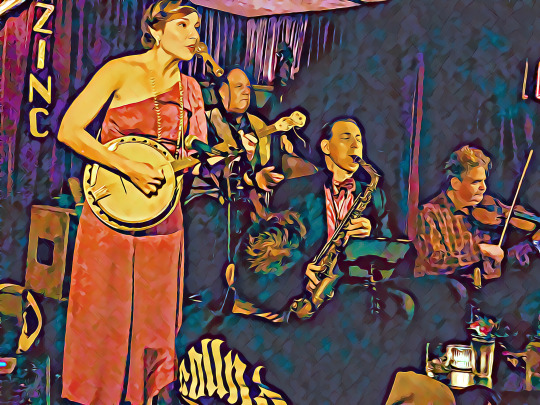
Miss Maybell had an expert supporting cast of Brian Nalepka (bass), Dan Levinson (reeds) and Andy Stein (violin). And, it goes without saying (or showing), Andy Judkins was ragging the keys next to Miss Maybell's right elbow.

On December 29, Peter and I got to Mezzrow early, so we heard the last half of the early set from the back of the room, and then had a band-side table for the second set.

It was the Chuck Redd trio, with Chuck on vibraphone, Neal Miner on bass, and (not shown) John DiMartino (piano).

There's John DiMartino.

Chuck has total command of the vibes. When I first saw him in a combo at Dizzys, he was completely new to me and so impressive that I had to hear more.

One Sunday night at The Ear, Chuck sat at our band-side table and played a rhythm on the table with drum brushes. I held an empty glass for him, and occasionally he'd hit it.

The surprise of the evening was Janis Siegel, of the original Manhattan Transfer, who sang a couple. Ooh!
On Saturday, December 30, Neal and I went to see Les Chauds Lapins at Pangea.

Anybody who plays the banjolele like it's a serious instrument is crazy enough to be a friend of mine. Kurt Hoffman and Meg Reichardt play French swing from the 1900s with style and humor. The French I learned in school wasn't quite enough to keep up with them, but occasionally I'd catch one of their double entendres.
The band's name, for example. Les Chauds Lapins literally means hot rabbits, but the better French syntax would be "les lapins chauds." I looked it up. Chaud lapin is an idiom for horny guy, or ladies' man.

Kurt and Meg were charming performers and good musicians. They were backed up by a violist, a cellist and a bass player who stayed decidedly in a supporting role.
On Saturday, December 30, Garrett Manley (guitar), Shane Del Robles (percussion) and Ian Hutchinson (bass) played a delightful brunch gig at The Canary Club in Chinatown.

Typical NYC gig - take three world-class musicians, hire them for your 15-seat cafe, and stuff them in a corner by the closet. By the way, the food was excellent.

That's Shane's washboard "kit."
That evening I went to see Quince Marcum at Barbes. He's one of the bartenders there, but he has a quirky folksongy genius.

He plays Bouzouki, not guitar. And he sings in at least three languages.

So ... tonight is New Years Eve. The prospect is a little bit frightening.
0 notes
Text
JE ME CONFIE EN TOI - École Pierre
JE ME CONFIE EN TOI, deuxième single du projet de l’école Pierre, est disponible sur toutes les plateformes 🔥
🎶 PAROLES
Couplet 1
Tu me connais, Toi mon Créateur
Tu me voulais, tout près de ton coeur
Rien ne peut me séparer
De l’amour que Tu m’as donné
Refrain
Je me confie en Toi,
Tu es bon, Tu es ma force
Je me confie en Toi,
Jésus, Tu as toute la place
Couplet 2
Tu es présent, Tu guides mes pas
Je suis confiant, Tu veilles sur moi
Seigneur Ta main est tendue,
Quand je suis la brebis perdue
Pont
Gloire au Roi qui ne faillit pas
Dans mes combats, tu gagnes à chaque fois
Pour toi Dieu d’amour,
Mes chants résonneront toujours
**🔴 CRÉDITS
Production vidéo : École Pierre
Auteur, compositeur, interprète : Dylan Vuattoux (étudiant à l'école Pierre)
Co-autrice : Julie Ciceron (étudiante à l'école Pierre)
Réalisation : École Pierre avec Martin Delbeke, Thomas Teissier et les étudiants de la Promo 4 ( Marie-Nathanaëlle Bougeant, Adèle Armstrong, Anaïs Voeffray, Blanche Esneau, Ophélie Poulenas)
Piano : David Brissac (étudiant à l’école Pierre)
Guitare : Ombeline Lamy (étudiante à l’école Pierre)
Guitare elec : Paul-Alexandre Ah-Hoc (étudiant à l’école Pierre)
Basse : Thibaud Lhotte (étudiant à l’école Pierre)
Drum : Helder De Lima (étudiant à l’école Pierre)
Arrangement : Cédric Dumoulin et Mika Andrianavalona (intervenants à l'école Pierre) et Jérémie Thomas (directeur musical de l'école Pierre)
Mixage : Cédric Dumoulin (intervenant à l'école Pierre)
Coaching vocal : Tendry Rajaonson (intervenant à l'école Pierre)
🙏 REMERCIEMENTS
Merci à la communauté cistercienne de l’abbaye de Notre-Dame des Neiges de nous avoir accueillis pour une semaine de résidence artistique dans ce lieu magnifique en Ardèche.
Merci au STAFF Pierre : Guillaume Cail, Jérémie Thomas, Faustine Mériau, Baptiste Mansot, Jean Langlois-Meurinne, Adrien Robert, Jeanne Larger, Matthieu Roussel
Merci à tous les intervenants qui ont drivé la direction artistique du projet : Sébastien Corn, Mika Andrianavalona, Cédric Dumoulin, Tendry Rajaonson, Obed Rajaiah, Salvatore Barletta, Lou Segura, Sixte Labouche, Martin Delbeke et Thomas Teissier.
👉 Lien vers : YouTube
👉 Lien vers : Facebook
#gospel
#music
#worship
#praise
#news
#musique
#évangélique
#actualités
#bgospelmagazine
#bgospel
0 notes
Text
INTERVIEW: ARMSTRONG GUN (UK)
THENWOTHM.COM caught up with Surrey based metallers Armstrong Gun to find out more about the band, their new EP ‘Struck With Steel’ and what they have in store for 2023!
THE NWOTHM: First up can you introduce us to the members of the band and where you are from?
A.G: Lewis Tocker – Vocals, Drums Dan Mortimer – Vocals, Bass Cameron Smith – Guitars. We are all from a little town called Horley…

View On WordPress
#armstrong gun#Interview#New Wave Of Traditional Heavy Metal#News#NWOTHM#struck with steel#The Nwothm#thenwothm
0 notes
Text
These Summer Decor Swaps Are Simple And Expert
Double glazed windows are essential for contemporary houses, as energy efficiency, warmth retention, noise reduction and pleasing decors turn into all of the extra important to our homes. Switching between stores will remove products from your present cart. A security wire hooked up to the exterior half of the unit supplies safety towards accidental dropping. The greater ones are troublesome to work with as a outcome of they’re far more difficult to maneuver and never so good at washing the corners of the home windows.
Cleaning exterior home windows from the inside very often turns into a nightmarish experience, particularly should you reside in an condo or a condo. The hazard of falling out of the window in a mixture with a fear of heights will most like make you surrender on this task. And let’s be honest, if you end up most unwilling to do some chore, you are inclined to put it off for so lengthy as you presumably can. Your bulk choice might be misplaced when you use the filters, change the variety of products you'll be able to see per page, or go away the page.
magnetic window cleaner takealot
In the Nineteen Sixties, luthier Dan Armstrong developed a line of electrical guitars and basses whose bodies were made utterly of acrylic. PMMA can be used as a dispersant for ceramic powders to stabilize colloidal suspensions in non-aqueous media. Due to its high viscosity upon dissolution, it can be used as binder material for resolution deposition processes, e.g. printing of solar cells.
Once the perimeters had been in place, I turned the green plastic screws on the inside to get a stronger magnetic connection. Then I labored within the beneficial S-shaped movement to wipe the muck away. I suggest extra cleaning resolution than you think you’ll must get a easy glide. For a streak-free end, I adopted up the first run with a swipe of the blue microfiber cloths that attach to both sides of the tool. To take away any streaks left behind and provides a great shiny look to your windows, place the microfiber cloth on each magnetic elements. Then spray the cloths with a little bit of the cleaning solution or with clear water and glide the magnets across the width of the whole window.
As we proceed to discover the potential use of these units, we might love to pay attention to from you. Adventures or misadventures using these devices or extra thoughts are most welcome. Other concerns involve the security of the objects in the exhibit circumstances; there is risk of mechanical harm if the gadget falls. One thought is to cowl the gadget in batting and material to buffer any potential contact.
We is not going to disclose your private info to any individual, firm or organisation . We don't share e mail or address info with different businesses or organisations. This web site contains material which is owned by or licensed to us. This materials consists of, but is not restricted to, the design, format, look, appearance and graphics. Reproduction is prohibited other than in accordance with the copyright notice, which varieties a part of these phrases and conditions. Your use of any information or materials on this web site is totally at your personal risk, for which we will not be liable.
The bigger circular clear black space represents the bigger outer side of the thick one-piece plastic cone "window". PMMA transmits up to 92% of seen gentle , and gives a reflection of about 4% from every of its surfaces as a outcome of its refractive index (1.4905 at 589.3 nm). It filters ultraviolet mild at wavelengths below about 300 nm . Some producers add coatings or components to PMMA to improve absorption in the 300–400 nm vary. PMMA passes infrared light of as a lot as 2,800 nm and blocks IR of longer wavelengths up to 25,000 nm.
Where attainable we additionally display their accepted/available cost strategies. We solely companion with reputable on-line shops, so think trust, suppose reliability and suppose the absolute best costs. In semiconductor analysis and business, PMMA aids as a resist within the electron beam lithography process. A solution consisting of the polymer in a solvent is used to spin coat silicon and other semiconducting and semi-insulating wafers with a skinny movie. Patterns on this can be made by an electron beam , deep UV gentle , or X-rays. Exposure to these creates chain scission or (de-cross-linking) throughout the PMMA, permitting for the selective removing of exposed areas by a chemical developer, making it a constructive photoresist.
#window cleaner#magnetic window cleaner#window cleaner equipment#window cleaner tool#karcher window cleaner#magnetic window cleaner game#double sided window cleaner#magnetic window cleaner verimark#magnetic window cleaner south africa#window cleaner tools#magnetic window cleaner builders warehouse#magnetic window cleaner makro#magnetic window cleaner takealot#verimark magnetic window cleaner#best magnetic window cleaner#window wizard magnetic window cleaner#verimark window cleaner#window cleaner equipment at game#window cleaner verimark#automatic window cleaner#window cleaner magnetic#window cleaner price#diy window cleaner#double sided window cleaner verimark#window cleaner at game#window cleaner checkers#window cleaner magnetic double glazed#magnet window cleaner#double-sided window cleaner#how to use window cleaner
1 note
·
View note
Photo
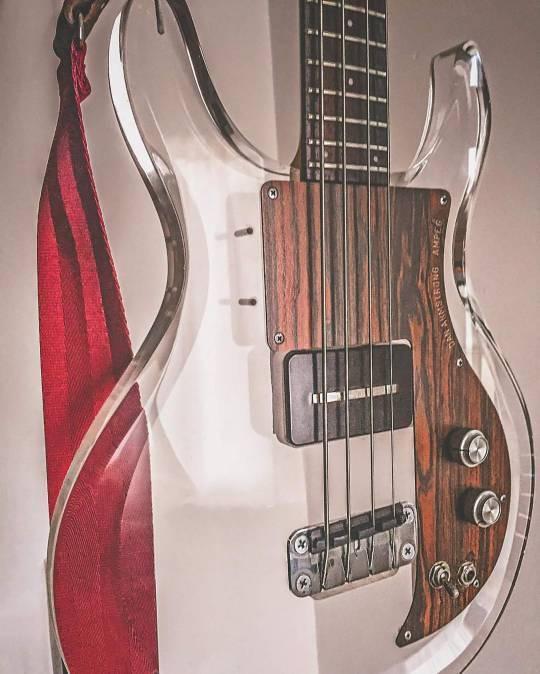
ampeg dan armstrong lucite bass
24 notes
·
View notes
Text

THE SITH LORDS OF '70s HARD ROCK -- DEMENTED, DOWNER, DARK SOUNDS RISING.
PIC INFO: Spotlight on bassist/lyricist Terence "Geezer" Butler of the mighty BLACK SABBATH, performing live during the band's "Vol. 4" era, and playing his now maligned Dan Armstrong plexiglass acrylic bass guitar, from the pages of "Ciao 2001" Italian-based music magazine, c. 1972.
Source: http://velho-coyote.blogspot.com/2019/06.
#BLACK SABBATH#BLACK SABBATH Vol. 4#Geezer Butler#Dan Armstrong bass#Downer rock#Bass player#Heavy rock#Doom rock#Heavy Metal#70s rock#Bass guitarist#Super Seventies#1972#Dan Armstrong plexiglass bass guitar#Dan Armstrong Plexiglass Acrylic bass#Rock photography#Photography#Bassist#Dan Armstrong plexiglass bass#Geezer#Bass guitar#SABBATH#Stoner rock#Ciao 2001 magazine#Ciao 2001#Vol. 4#Dan Armstrong bass guitar#Hard rock#BLACK SABBATH 1972#Terence Geezer Butler
0 notes
Text

44 notes
·
View notes
Photo
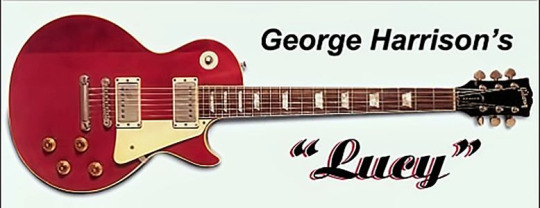
In 1965, when John Sebastian was with the Lovin' Spoonful, he had a Goldtop 1957 Gibson guitar, which he traded to Rick Derringer of The McCoys for an amplifier to replace one that had blown.
By around 1966, the guitar's original gold finish was looking very worn, and Derringer's father continually ragged him about it. "So I figured that since we didn’t live far from Gibson’s factory in Kalamazoo, the next time the group went there I’d give it to Gibson and have it refinished,” Derringer recalled. “I had it done at the factory in the SG-style clear red finish that was popular at the time." However, he wasn't happy with the instrument when he got it back: it "just didn’t feel the same...it had changed into an altogether different guitar." Derringer then sold it to Dan Armstrong's guitar shop in New York. The guitar had only been in Armstrong's shop for a few days when it was purchased by Eric Clapton. Clapton did not play this instrument much, his principal guitars in 1966-68 being his psychedelic 1964 SG, a 1964 ES-335, a 1963 or 64 Reverse Firebird and a sunburst Les Paul he bought from Andy Summers.
In August, 1968, Clapton gave the guitar as a present to his good friend, George Harrison. Harrison dubbed the red guitar, "Lucy," after redhead comedienne Lucille Ball.
Harrison and The Beatles were at the time recording what would become The Beatles (the White Album), and had been working for several weeks on "While My Guitar Gently Weeps." Harrison had been unable to record a lead track for the song he was satisfied with; moreover Lennon and McCartney were dismissive of it and "didn't try very hard." Therefore Harrison, knowing that his bandmates were on good behavior around guests, invited Clapton to come into EMI Studios on September 6 and lay down a lead track, telling him "you don't need to bring a guitar, you know I've got a good Les Paul you can use." Clapton laid down the track in a single take. But later said that he was so high at the time he doesn't remember it at all
Harrison continued to play Lucy as one of his principal guitars for the remainder of his time with The Beatles. It can be seen in the promotional video for "Revolution" and the documentary, Let It Be.
In 1973, Lucy was one of the items stolen in a burglary at Harrison's home in Beverly Hills. The thief or an intermediary sold it at Whalin's Sound City on Sunset Boulevard in Hollywood. Owner George Whalin promptly resold it (in violation of the statutory 30-day waiting period) to Miguel Ochoa, a musician from Guadalajara, Mexico. When the red guitar appeared on a police stolen-property bulletin, Whalin called Ochoa's contact number, his friend Mark Havey. This began a lengthy negotiation which resulted, ultimately, in Harrison via Havey, trading Ochoa a Les Paul sunburst and a Fender Precision Bass for the return of Lucy. Harrison would later refer to the incident as a "kidnapping." Harrison kept Lucy until his death in 2001.Lucy is now one of the most famous electric guitars in the world.
11 notes
·
View notes
Photo

Dan Armstrong Ampeg Lucite Bass Guitar
4 notes
·
View notes
Photo
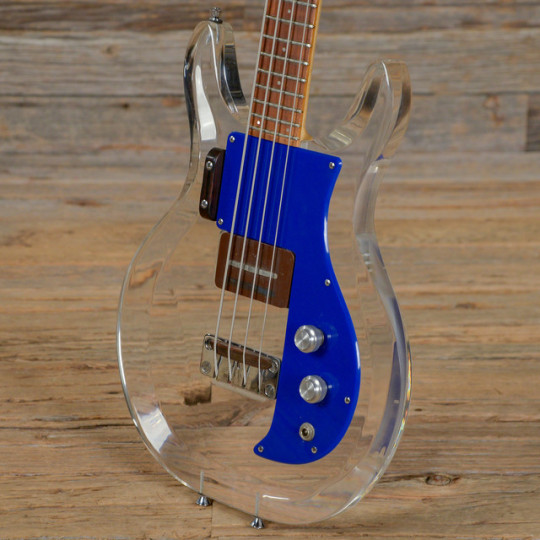

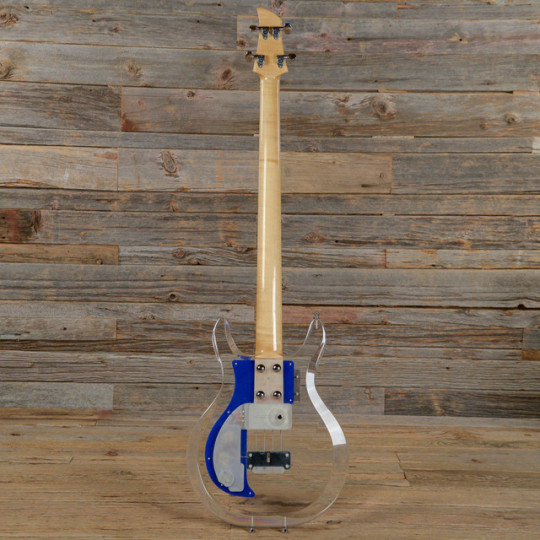


1969 AMPEG DAN ARMSTRONG BASS PLEXI CLEAR
from https://www.chicagomusicexchange.com
13 notes
·
View notes
Note
Hi I enjoy your blog and have a serious question. Do you know how Keith and Mick got the awesome sound on GYYYYO ?
Anon, I don’t know if you’re pulling my leg and I don’t care. As I say when a woman agrees to a “pity date” with me, heck at least it’s a date.
I do know. I know because I specialize in knowledge that will never make me money.
The tone on Get Yer Ya-Ya’s Out or GYYYO is from:
* The guitars.
* The amplifiers.
First, the guitars:
Keith plays Dan Armstrong guitars, one a see-through prototype with a single Bill Lawrence pickup, the other a see-through production model with a different Bill Lawrence. Keith also played a Gibson ES 355 and a 1959 Les Paul. I’ve seen him pictured with a Gibson Black Beauty and a Flying V on the ’69 tour but not on stage in New York.
Little Mick played a 1963 Gibson SG Standard, the 355, and the Les Paul.
Bill played a Fender Mustang.
The amplifiers were the secret weapon. 300 watt Ampeg tube bass amplifiers. You can hear them approaching melt down on Street Fighting Man; when Keith gets that out of phase sound it’s from the tubes about to fail.
No effects, no pedals.
Thanks for my favorite question of the new year.
Yours,
Shelly Kornpett, DDS
11 notes
·
View notes
Photo

Just arrived a 1970 Ampeg Dan Armstrong “See Through” Solid Body Electric Bass in its original hard shell case! (please click on the link in our profile to learn more and purchase). Thanks. (at Retrofret Vintage Guitars) https://www.instagram.com/p/B6EUA2RgSx6/?igshid=qux0b6jw3tnp
23 notes
·
View notes